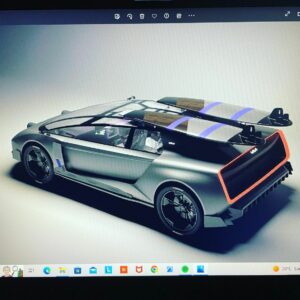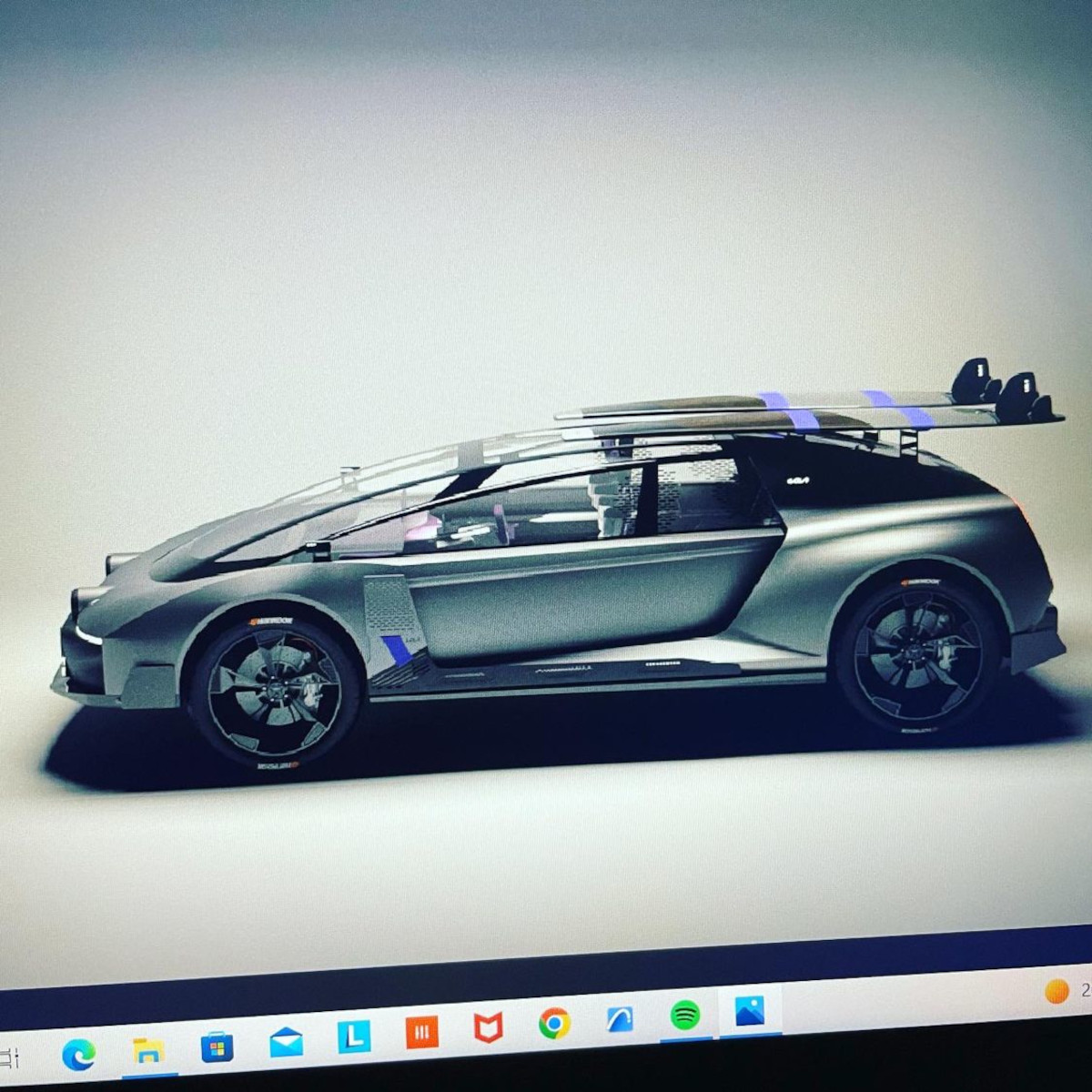Erkan Candar an Industrial Designer has come up with a mindboggling KIA EV Crossover and he talks about what tool he has used and has shared his experience.
KIA EV Crossver Concept
It sounds like an exciting project! The juxtaposition of the KIA brand with a high-performance EV crossover is off-road capable but also street-performance focused is interesting. The emphasis on a dynamic, unique form that challenges design conventions is sure to attract attention.

Here are some points you might consider as you approach the design and rendering:
1. Materials: For such a dynamic concept, consider materials that reflect (literally and metaphorically) the car’s unique nature. For instance, perhaps you can play with matte vs. glossy finishes, or combine traditional car materials with unexpected ones (e.g., incorporating elements with a carbon fiber look, brushed aluminium, or even textured patterns).
2. Lighting: Since you’re using Vray, you have the benefit of working with advanced lighting techniques. Think about the emotion you want to convey. A darker setup with dramatic highlights can emphasize the car’s powerful aspects. If you want to showcase the car’s unique form, consider a three-point lighting setup to accentuate its curves and edges.
3. Environment: Even though this is a test render, consider the background and environment. If the car is meant for both off-road and street use, perhaps render it in two environments, one urban and one rugged, to showcase its versatility.

Angles
4. Camera Angles: Play with dynamic camera angles to capture the essence of the car. A low angle can make the car seem even more dominant and imposing, emphasizing its wide stance. On the other hand, a bird’s eye view can highlight the top contours and emphasize its unique mould.
5. Details: Since you mentioned a play between hard edges and soft transitions, make sure to emphasize these in your render. Zoom in on certain areas, maybe where a hard edge meets a soft curve, to really draw attention to this design choice.
6. Post-processing: After rendering, consider some post-processing in software like Photoshop. This can allow you to adjust contrasts, play with colour grading, and add effects that can amplify the car’s dynamic look.
7. Feedback: As it’s an experimental approach, gather feedback from a varied audience. Sometimes, people outside the auto or design industry can provide insights that professionals may overlook.
Conclusion
Remember the goal of rendering, especially in this early phase, is to communicate the vision for the vehicle. Emphasize those unique aspects that set your design apart, and ensure that the emotion and intention behind the concept come through clearly.


































